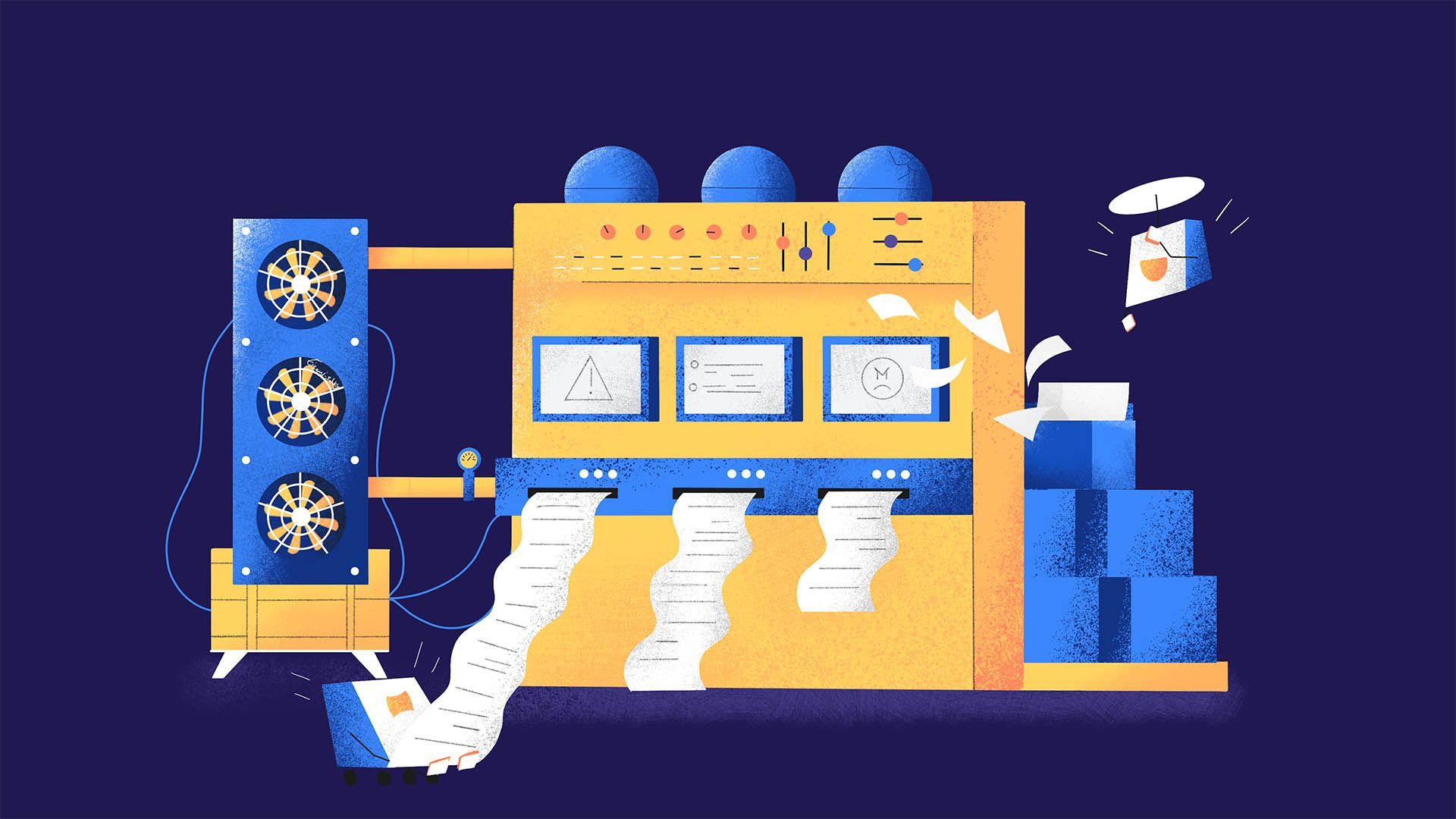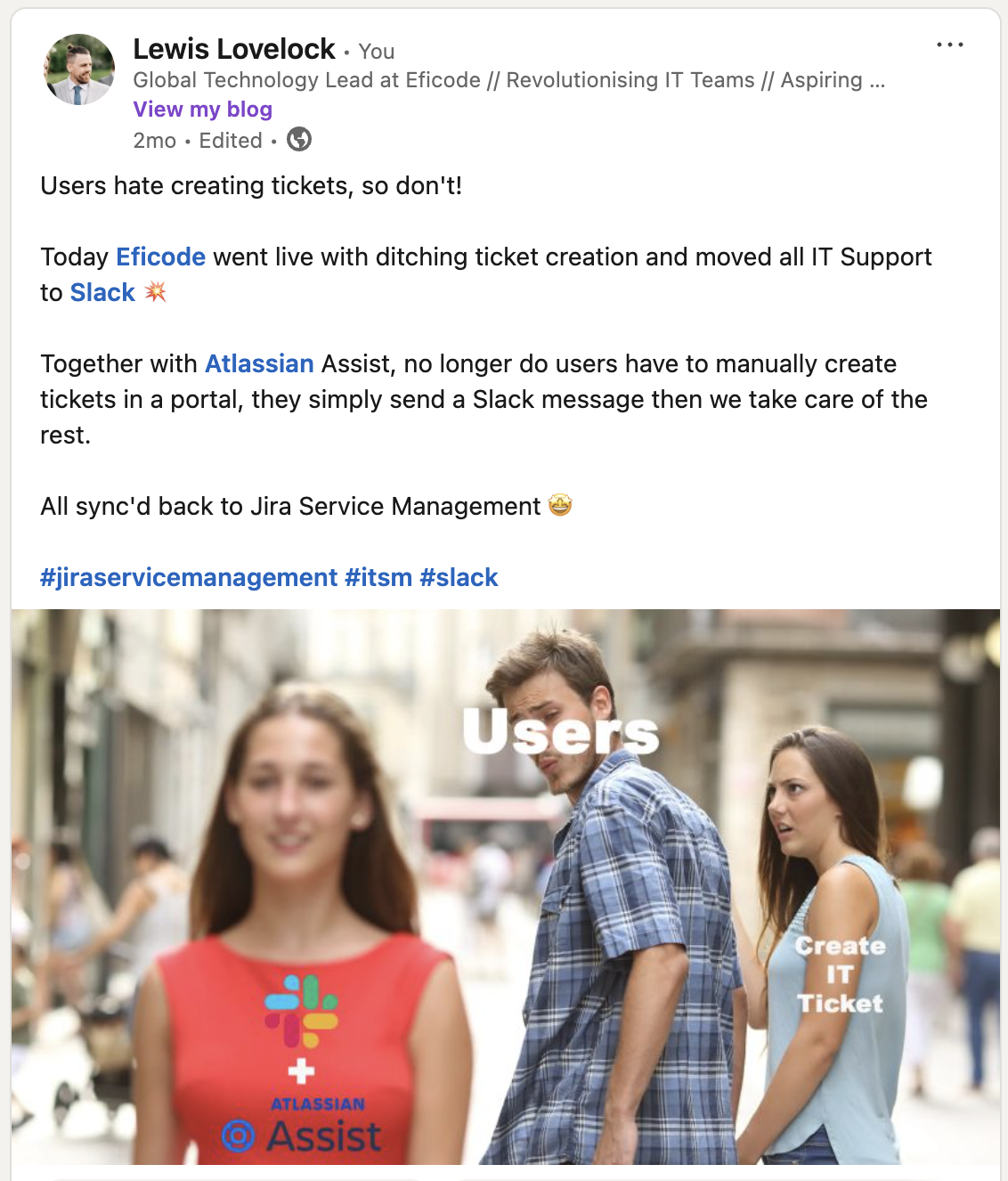Users hate creating IT tickets, so don't 🧐
 Lewis Lovelock
Lewis Lovelock
In today's fast-paced technological landscape, ensuring seamless IT support is critical for maintaining productivity and minimising downtime. At Eficode, we recognised the need for a unified and efficient IT Service Management (ITSM) platform to address the varied and often inconsistent support experiences across our sites.
This blog post outlines the challenges we faced and covers our strategic plan for implementing a global ITSM platform that transformed how we deliver IT services to end users..
Eficode is a leading DevOps and software development company dedicated to delivering innovative technology solutions and fostering continuous improvement in software development practices, with 700 employees across 10 countries.
Previous Challenges in Eficode IT Support
In February 2024, Eficode's IT support system presented several significant challenges:
Fragmented Support Channels: Our IT team was contacted through various service desk platforms, multiple Slack channels, in-person requests, and self-service documentation. This fragmentation led to inconsistent support experiences.
Unclear Response and Resolution Expectations (SLAs): Staff members were unsure when they would receive responses and resolutions to their technical queries, leading to frustration and inefficiencies.
Lack of Business Impact Prioritisation: Support prioritisation often depended on who was most vocal rather than on the business impact, resulting in a suboptimal resource allocation.
Limited Insights and Reporting: The previous platforms provided minimal valuable insights or reporting, making data-driven decision-making challenging.
User Feedback on IT Support
Over a 6 week period interviews with team leads, senior managers and high ticket creators (by volume) were conducted, this collected information was then combined with our bi-annual IT survey, giving the following valuable feedback highlighting both strengths and areas for improvement:
Preferred Contact Methods: Users favoured a mix of Slack and portal communications, with Slack being used for urgent issues and the portal for trackable, non-urgent requests.
Service Desk Response Times: While urgent requests were generally handled promptly, non-urgent issues could experience significant delays, sometimes spanning months.
Positive Interactions: Despite the system's shortcomings, users appreciated the IT team's responsiveness and dedication, often preferring direct communication methods for quicker resolutions.
Key Takeaways
Users Prefer Slack: Slack is the preferred method for quick and direct communication with the IT team.
Service Desk Issues: There was a perception of the service desk being a "black hole," with no clear Service Level Agreements (SLAs) and inconsistent follow-ups.
Excellent IT Team: The IT team is highly regarded for their support and willingness to go beyond expectations.
The Road Ahead: Our ITSM Plan
To address these challenges and leverage our strengths, over 8 weeks Eficode Global IT rolled a new unified IT Service Desk, depreciating all previous support methods and tools.
Here is an overview of our work:
Jira Cloud Migration: Moving our service desk platforms to single Jira Cloud (specifically Jira Service Management) to streamline support processes.
Slack Integration: Designing Slack channels and workflows to ensure seamless user experiences when requesting help.
Defining SLAs: Implementing SLAs to set clear expectations for response and resolution times.
Enhanced Reporting: Introducing robust reporting capabilities to facilitate data-driven decision-making.
Why Slack?
The simple answer is, that's where our users work. Either by reviewing the interview and survey feedback, or by analysing existing behaviour, we showed users don't want to leave the apps they work in. Especially to open a ticket portal, fill in all the required fields and hope for a response at some point.
They want to send one message and get help. Simple.

Why Jira Service Management?
In two words? Atlassian Assist.
Atlassian Assist works by allowing users to initiate specific workflows directly within Slack, enabling streamlined and efficient handling of common IT requests such as hardware, software, and onboarding processes. This integration ensures that requests are automatically tracked and managed through the Jira Cloud platform, providing a seamless and organized support experience.
By simply typing "/assist" into the Slack message bar, our users can now quickly create an IT ticket, track its progress and reply in the thread until their issue is resolved, all from within Slack.
IT engineers can then chose to either work directly in Slack, or in the JSM agent portal, everything is sync'd in real time 🔥
Has it worked?
It's now been 4 months since we went live and the results speak for themselves:
Satifcation of IT support has increased by 42%
Users requesting assiatnce has increased by 46%
Average response time decreased from 30 days to 4 hours!
My Slack DM's are full of service leads inside Eficode wanting to adopt the same functionality 😅
Conclusion
Our transition to a new ITSM platform combined with Slack marks a significant step in enhancing the IT support experience at Eficode. By addressing current challenges and leveraging user feedback, we provided a more consistent, efficient, and user-friendly support system.
Lewis Lovelock
Global Technology Lead
Subscribe to my newsletter
Read articles from Lewis Lovelock directly inside your inbox. Subscribe to the newsletter, and don't miss out.
Written by

Lewis Lovelock
Lewis Lovelock
Lewis Lovelock - Global Technology Lead